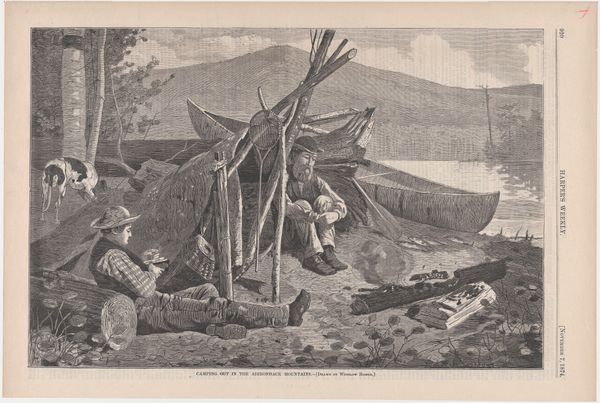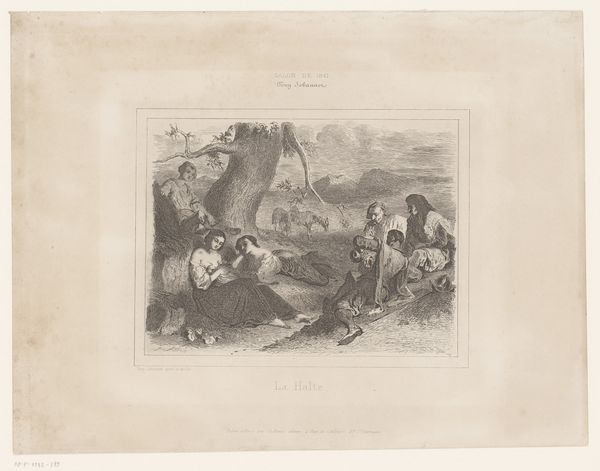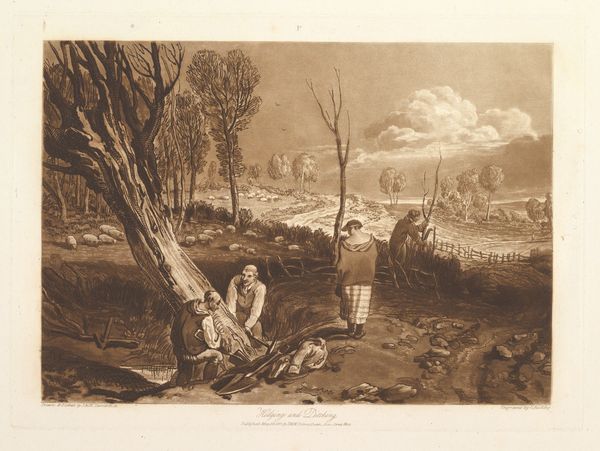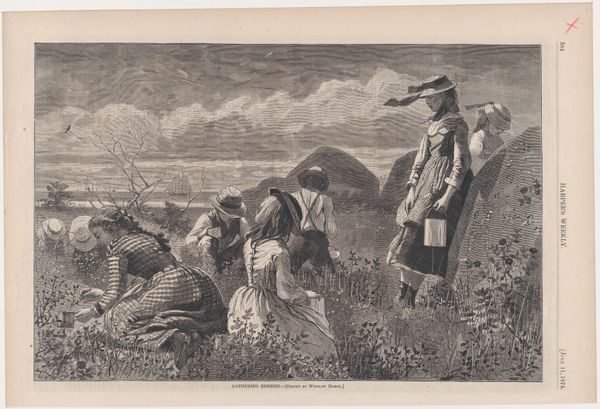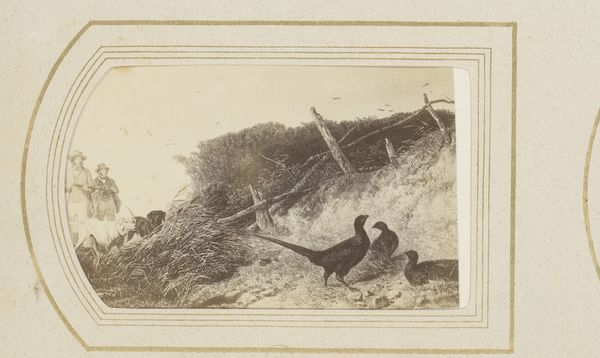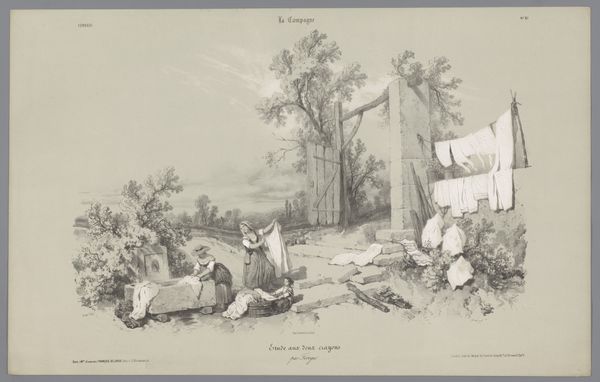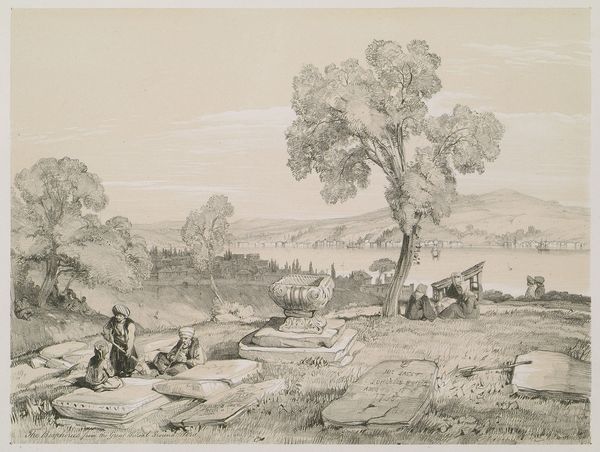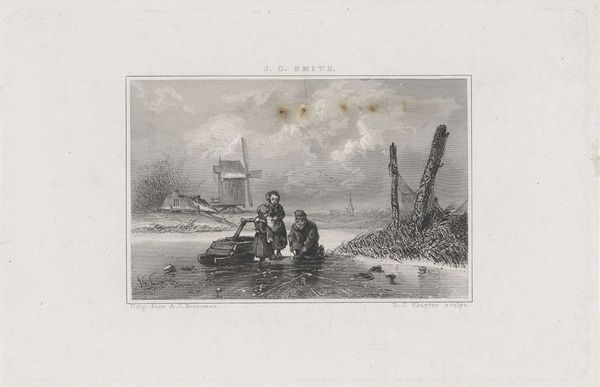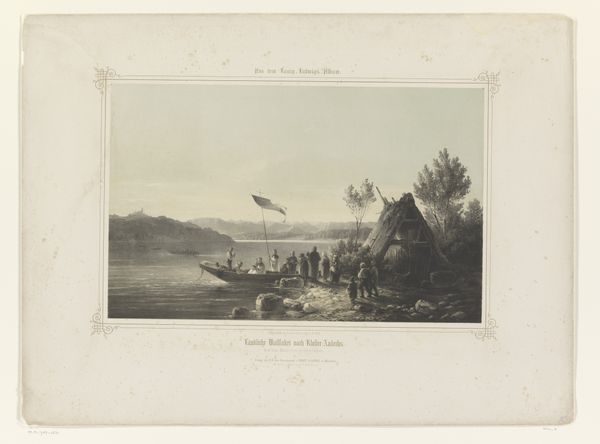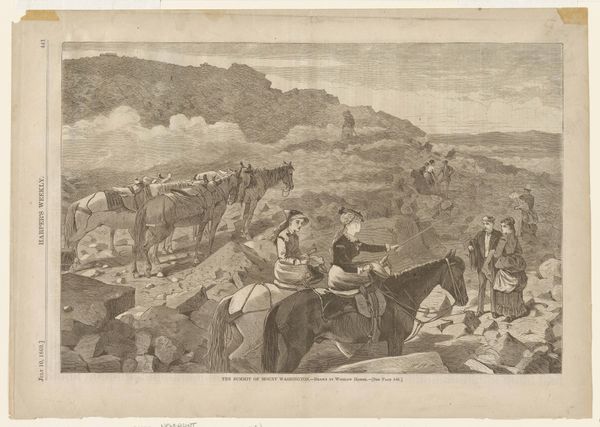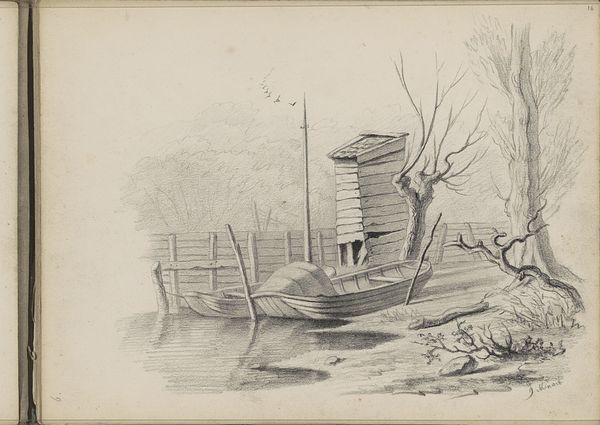
print, woodcut, wood-engraving
landscape
woodcut
united-states
genre-painting
wood-engraving
realism
Dimensions: 9 1/8 x 13 3/4 in. (23.2 x 34.9 cm)
Copyright: Public Domain
Curator: Here we have Winslow Homer’s "Camping Out in the Adirondack Mountains," created in 1874. This wood engraving offers a glimpse into leisure and recreation in the late 19th-century American landscape. Editor: The scene is instantly inviting, almost like stepping into a peaceful moment away from the hustle. I'm struck by the textures, even within the print medium—the roughness of the logs against the smooth water of the lake. Curator: Absolutely. Homer’s work often reflects a romanticized view of wilderness, popularized through publications like Harper's Weekly, where this piece first appeared. Consider its audience: city dwellers seeking an idealized escape. Editor: Yes, that resonates when you think about the context. This isn't raw survival, is it? There’s a leisure element in how the space is crafted, down to the tools. Note how that basket—presumably for fishing—hangs near the makeshift shelter, everything is organized in this camp. Curator: Precisely. This image comes at a time of growing industrialization and urbanization. The Adirondacks, for many, symbolized a return to simpler values and connection with nature that the work embodies. Think about preservationist movements gaining traction at the same moment as well. Editor: So it is connected to social class and an increasingly urban population with newfound means and desire to "experience" the rugged outdoors? But at what cost, ecologically and in terms of impact to rural communities who depend on natural materials to produce art? Curator: Indeed. As recreational use of wilderness expanded, so did the commodification and transformation of those spaces. While romanticizing, these images gloss over the complicated power dynamics implicit to who gets to "retreat" into these "untouched" locations. Editor: It also makes me wonder about the tools and skills— the physical labor— required to make even what we perceive as a simple wood engraving. Someone selected the wood, meticulously carved, printed... layers of labor we often miss. Curator: An excellent point. Homer's skill as an artist should not overshadow the contributions of the engravers and printers whose hands brought the image to a broad audience. Editor: Considering its original publication in Harper’s Weekly gives it even more significance— reaching mass audiences shaping and reifying contemporary values about nature and art production. Thanks, this discussion adds to my experience viewing this work. Curator: My pleasure. Seeing art with your material analysis in mind provides an interesting lens and broader context, illuminating these subtle cultural narratives within art and history.
Comments
No comments
Be the first to comment and join the conversation on the ultimate creative platform.
